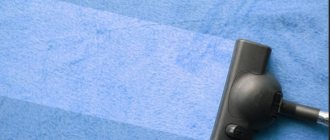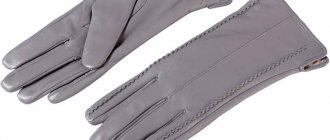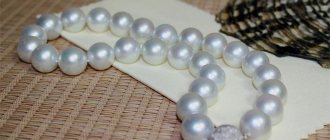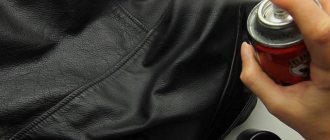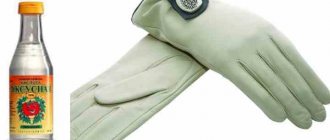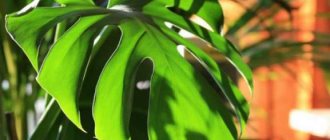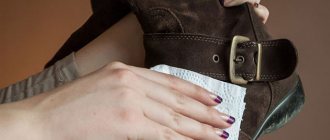Laminate flooring appeared on the market relatively recently, but almost immediately gained extraordinary popularity. Today, laminate floors in apartments and private houses are not at all uncommon. They are not only functional and aesthetic, but also highly resistant to various damages. However, even such material requires proper care. Otherwise, the laminate will lose its appearance and shine.
Characteristics of laminate flooring
Laminate manufacturers are guided by such a concept as wear resistance class. This classification was developed in order to make it easier for the consumer to select finished products based on needs and capabilities.
According to the type of operation, laminated coatings are divided into 2 groups:
- for commercial use,
- for home use.
In turn, group 1 has classes 31, 32, 33, and group 2 has classes 21, 22, 23.
Commercial laminate has increased strength, so it is used in rooms with a constant flow of people - industrial enterprises, service organizations, etc. Laminate for home use is not so durable, but wear-resistant enough to be used as flooring in residential premises.
In addition to classification, markings corresponding to the level of durability and strength are also used. All this data may be useful to you in order to have a more accurate understanding of the features of caring for laminate flooring in your apartment.
The types of coating are different, so their care is different, albeit slightly. For example, if you have a moisture-resistant laminate, you can safely wash it with a wet cloth or a vacuum cleaner. Cheap material without a water-repellent coating will have to be used with greater care.
The detailed classification of laminate floors is as follows.
- Class 21 - home or household laminate. Cheap material without a reliable protective coating, unstable to moisture, chipping and scratches. It wears out easily and quickly loses color during use. Average service life is 2 years.
- Class 22 - household coating. This laminate is stronger than the previous one, but still it is not suitable for rooms that are frequently visited, for example, a corridor, kitchen, living room. The service life is 2–3 years; to reduce the load on the material and extend the service life, it is recommended to lay carpet on such a floor.
- Class 23 - laminate with a high degree of strength, used for residential premises of any purpose. Service life - 4 years.
- Class 31 - commercial laminate used in commercial premises. In this classification, such material is the most economical. In home use, a floor made from this laminate will last you 10–12 years.
- Class 32 also refers to commercial. The level of strength and reliability of the coating is high enough for a floor made from such a laminate to last 3–5 years in commercial premises with an average load or 15 years in a residential building.
- Class 33 is the most durable laminate for commercial use. It is able to withstand intense loads, is not afraid of moisture and even hides the sounds of footsteps when walking. In residential premises, such coating will last 20 years.
How to repair laminate damage yourself
If visible defects appear, do not rush to change the coating. Most scratches can be removed by hand. But this must be done quickly so that the crack does not grow and lead to serious deformations.
Eliminating minor scratches
Here is a step-by-step action plan when you discover a shallow defect:
- Wash the floor thoroughly and wait until it is completely dry.
- Apply a few drops of olive oil to the scratch.
- Polish the surface with a dry towel.
- After 15-20 minutes the damage will disappear. If the defect remains noticeable, repeat the procedure.
Repairing medium and deep scratches
Noticeable defects are more difficult to eliminate and cannot be done with improvised means. You will need special materials.
- The cheapest remedy is wax pencil
. It is sold in almost any hardware store, has a rich palette of shades and does not require effort to use. Cover the scratch and buff the surface with a rag.
- Part retouching marker
includes quick-drying enamel that is resistant to moisture and detergents. No additional coatings are required after application.
- Wood sealant
. We recommend the brand MASTERTEKS PM. The range is represented by grouts of different colors: for beech, pine, oak, wenge, etc. Apply the paste to the defect and remove excess. When the material is dry, coat it with clear nail polish.
- Acrylic lacquer
used for repairing glossy laminate flooring. Apply it to the scratched area and wait until it dries. The floor will look like new.
- To eliminate large defects use gypsum
. It is mixed in equal proportions with sawdust and water and brought to a paste-like consistency. The mixture is poured into the crack and smoothed with a spatula. If the gap is deep, wood chips are placed at the bottom.
There is nothing difficult about repairing laminate flooring yourself. If you're afraid of doing something wrong, practice in hidden places: under the carpet, behind the sofa or under the closet.
Equipment and care products
As for the care of laminate flooring, it also has its own characteristics depending on the class. Thus, for household coatings, it is strictly forbidden to use wet rags or a washing vacuum cleaner and use caustic substances to remove stains. We recommend dry cleaning every 2 days and wet cleaning once a week. Any surface defects must be restored immediately, otherwise they will quickly increase. Experts advise installing class 21 and 22 carpet in those rooms where traffic is most intense. The movement of furniture on such a laminate should be minimized.
Commercial grade laminate flooring requires less vacuuming and you can wash it more often. To remove stains on it, it is allowed to use products containing alcohol, acids and alkalis. Due to the strength of the coating, defects appear on it much less often.
Unfortunately, not everyone can afford high-quality waterproof laminate, and most often consumers purchase relatively inexpensive material. For such a coating, the best option would be dry vacuuming. And for wet cleaning, it is better to purchase special products for cleaning laminate floors in the store. When choosing, pay attention to the composition: any abrasive substances are excluded (that is, we definitely refuse cleaning powders) and products with a disinfectant or bleaching effect, including acids and alkalis - all of them destroy the glossy layer of the laminate.
Special products are made from organic soap with the addition of glycerin, a small amount of alcohol and antibacterial substances. The price can vary from affordable to downright high. But the money spent will pay off, since the expensive product will last for a long time.
The instructions on the package state that the laminate product should be diluted at the rate of 1-2 caps per bucket of water (10 liters). You can use it no more often than once every 3-4 washes, which is about once a month.
When cleaning wet, use flannel or microfiber cloths. These fabrics are soft and highly absorbent. The rag must be wrung out properly. A mop with a wringer mechanism will help you with this. After washing, it is recommended to wipe the floor dry with a cotton rag, especially if you notice that there are stains on the surface.
Note! Do not allow moisture to remain on the floor. Water is the main enemy of laminate; it is absorbed into the surface and penetrates the seams between the panels, causing swelling. Wring out the cloth as thoroughly as possible before cleaning your laminate floor.
You can use home remedies to care for laminate flooring. For example, baby shampoo is safe to cover. It is enough to add 5 tbsp. l. into a bucket of water, and this solution will do an excellent job of removing dirt. You can also use liquid soap or neutral dishwashing detergent.
How to clean laminate flooring after renovation
During repairs, it is necessary to carefully cover the floor with film or newspapers. If you still cannot avoid contamination with paint, primer, glue, lime, cement, do not hesitate to clean it. Here's how to clean laminate flooring from cement stains: Add a glass of 6 percent table vinegar to a bucket of water and wash the laminate flooring. Vinegar will soften the cement and also make the floor shine.
Paint stains are wiped with a sponge soaked in vegetable oil. After this, wash the floor with water and salt. Solvent, gasoline, and alcohol will also help. Be careful, don't rub too hard. Finish with a damp sponge. And you can also get rid of traces of lime using vegetable oil. For greater effect, use window cleaner.
How to clean laminate flooring from traces of polyurethane foam? The pharmaceutical drug Dimexide will help. You need to moisten a napkin in it and apply it to the stain. After a quarter of an hour, wash off. Hot water will dissolve wallpaper glue and varnish stains. Wash off dirt gradually so as not to spread dirt over the entire surface.
Primer, varnish, glue, cement can be cleaned with window cleaner.
During renovations, it is difficult to ensure that there is no dust in the apartment. Any dirt can be easily removed from a wooden floor with plenty of water. But how to clean laminate flooring from construction dust? Moisture is contraindicated for it, and a wet wipe cannot cope with the problem. Vacuum the flooring, then wash the floor with one of the laminate products, for example, Pronto or Emsal. Mr. Proper can do just as well. Remember that cleaning laminate flooring with a vacuum cleaner is not recommended.
At the end of cleaning, change the water, pour a little dishwashing liquid into it, stir well and rinse the floor again.
Types of laminate floor cleaning
The rules for caring for laminate flooring provide for 2 types of cleaning - dry and wet. The first type is removing dust and dirt using a soft broom, brush or vacuum cleaner. It is recommended to carry out dry cleaning once every 2 days.
There are certain rules for wet cleaning, since laminate flooring is very sensitive to water. It is carried out if necessary or no more than once every 2 weeks.
- If the dirt on the floor is minor, use plain water for washing, without additional products. It should be warm and clean. As soon as the water becomes cloudy, replace it with fresh water.
- Wring the dampened rag thoroughly to keep it damp.
- To remove more stubborn dirt, use special laminate products. The purchased drug must be tested for safety. First treat an inconspicuous area of the laminate with it, and, after making sure of a good result, use it on the rest of the surface.
- It is better to wash laminate floors, starting from the window and moving towards the front door. This will prevent you from walking on the washed laminate while it is wet.
- When you're done cleaning the floor, wipe it thoroughly with a dry cloth. Pay special attention to the joints: water can accumulate in them.
By the way, I want to share with you my personal experience in caring for laminate flooring. You can do without special tools if they are not at hand. The salesperson at the store where we bought laminate flooring gave simple advice: you can wash this floor with water and fabric softener. 1-2 teaspoons of this product per bucket of water is enough. The laminate becomes clean and there are no streaks left on it. And if your laminate floors have a rough surface rather than a glossy one, dirt sticks to it more intensely, especially in areas that are used most often. You can remove dirt from such a laminate with oven cleaning gel. Place a small amount of product on the soft side of the sponge and blot the floor, pressing lightly on heavily soiled areas. After this, wipe the floor with a damp cloth. But do not forget that any of the described means must first be tested on an inconspicuous piece of laminate.
Removing stains of various origins
Stains on the floor can form from anything, the main thing is to know how to quickly get rid of them without causing mechanical damage.
- Oily spots. In order to get rid of oily contamination, it is frozen. Apply ice to the contaminated area, and after freezing remove it with a rubber scraper. You can also wipe the stain with soapy water.
- Water stains. After wet cleaning, stains may remain. To eliminate them, you need to rinse the floor again with water and vinegar.
- Ink stains. If we are talking about ink marks, then you can use a special product or carefully wipe it off with acetone.
- The wax is removed with a thin plastic scraper, and then polish is sprayed on the area where the stain was.
- Marker marks. The marker can be erased with acetone. First wipe the stain with a dampened cloth and then dry it.
- Traces of blood. Dried blood is washed off with glass cleaning spray. Spray the product onto the stain and wipe with a damp cloth.
- Chewing gum and plasticine. Apply vegetable oil to the stuck chewing gum. After a few minutes, it is removed with a cloth. Remaining grease is removed with water and dishwashing detergent. Plasticine can be frozen and scraped off after hardening.
- Nail polish can be removed with nail polish remover. The main thing is to prevent liquid from getting on the clean floor.
- Dark shoe streaks, shoe polish. Traces of shoe polish can be removed by vinegar, acetone, and baking soda solution. Wipe first with the composition and then with a dry cloth.
- Zelenka, iodine. Zelenka and iodine are alcohol-based, so alcohol-based compounds can remove stains.
How to remove stains and heavy dirt
Regular cleaning to remove normal dirt and dust is not difficult. But you and I know that more permanent dirt often appears on the floor. This is inevitable, especially if there are small children in the family. Greasy food stains, spilled drinks, drawings with felt-tip pens or colored wax crayons and much more - what to do with them? There are ways, and they are simple and effective.
- To clean laminated surfaces, you can use the same product as for washing glass: 5 liters of warm water and 1 tbsp. l. vinegar 9%. This solution removes stubborn dirt well.
- Liquid soap can remove grease stains. You can also use a special paste.
- Use vinegar with lemon juice to remove stubborn stains. Mix 1.5 cups of vinegar with 1 cup of lemon juice in 2 cups of water. Add a little detergent and whisk until foam forms. It is with this foam that you need to rub the laminate to clean and polish it.
- To get rid of stains left by wine, coffee, tea, juice, use any product with a neutral pH factor. This could be the shower gel or shampoo you use.
- Stains from polymer-based substances (this could be nail polish, felt-tip pens or shoe polish) should be carefully cleaned with acetone or white spirit. Before use, the solvent must be diluted at the rate of 1 teaspoon to 2 tablespoons of water.
- Mastic, chewing gum or dripped candle wax should be scraped off with a plastic or wooden scraper, but in no case with metal objects that leave scratches on the laminate. If a greasy stain remains after removal, treat it with liquid soap. It is very important that the dirt is completely dry before you start scrubbing, otherwise you will simply smear it across the surface. You can quickly freeze them using ice or cooling gel.
How to remove stains from laminate flooring
How to wash laminate flooring if it is seriously dirty? The spots are different. If these are footprints, go over the floor with a damp mop. Add a store-bought laminate floor care product or a couple of tablespoons of vinegar to the water. If the contamination is serious, you will need drastic remedies, including alcohol and acetone.
General recommendations are:
- apply a cleaning composition to the stain;
- leave for 5-10 minutes to dissolve the contamination;
- Use a damp cloth to remove residue from the floor;
- Wipe the area thoroughly.
Important
Try to remove any contamination immediately so that the dirt does not become embedded in the coating.
And now the specifics:
- Wax and paraffin dripped onto the laminate. Let it cool, then remove the blot with a knife and wipe with soapy water. Clean the area with laminate repair paste.
- The chocolate has smeared. Place an ice pack on the stain and scrape it off with a plastic scraper after a while. Remove any residue with glass cleaner. Do the same if there is chewing gum stuck to the floor.
- Marks from a felt-tip pen, varnish, or lipstick will disappear under the influence of acetone, alcohol, or solvent. If that doesn’t help, apply toothpaste to the stain and wipe with a dry cloth after a few minutes.
- To remove traces of fat or juice, treat the area of contamination with a cleaning agent with neutral pH or ethyl alcohol or acetone. The latter in this case can be replaced with liquid soap.
- Sticky stains are washed off with warm water.
- Wine stains - with soapy water. If the stain is not detected immediately, use alcohol.
- The window cleaner will remove fresh blood from the floor. After cleaning, go over the surface with a damp cloth. If you don’t have the product, but you have a piece of nylon fabric at hand, use it.
- Warm water with washing powder dissolved in it will remove the ink stain. But it is better to use a special ink remover.
- Are there any marks left from the soles of your shoes? Wipe them off with an eraser or the hard side of a kitchen sponge. Another option: coat the stain with baking soda slurry, wait a little, and wipe off with a damp cloth.
- Nail polish, except acetone, can be wiped off with moistened washing powder.
Cosmetic repairs: eliminating damage
Special attention should be paid to products that will help you “heal wounds” on the surface of the laminate. Walking and running on the floor, moving furniture and other vigorous activities can lead to scratches and even chips. To process them, there is a special paste, wax crayons and restoration varnish. They can be purchased in the same place as laminate flooring. In addition, you can buy a complete set of tools for repairing laminate flooring, which, in addition to materials, contains spatulas and spatulas.
Minor abrasions and scratches can be easily removed with wax chalk, which contains wax, dye and paraffin.
- Wash the laminate floor so that no dirt remains on it, and wipe dry.
- Paint over the damaged area with chalk until the composition completely covers the scratches.
- Wait a few minutes for the wax to dry, then buff the area with a dry cloth.
Deeper scratches and chips can be removed with a wax paste of a suitable color. Treatment with this product is almost the same as in the previous case.
- Clean and degrease the laminate.
- Warm up the paste and apply it to the chip using a plastic spatula, completely covering the damage.
- Wipe off excess with a wet rag.
- Wait for the paste to dry and polish the area.
After completing the restoration work, you can cover the treated areas with a special colorless repair varnish for laminate flooring.
How to wash laminate flooring
To make cleaning as effective as possible, use products that are designed specifically for laminate flooring. You will need not only floor cleaning liquids, but also suitable equipment.
Inventory
Mops, rags and brushes are usually used to clean laminate flooring. The latter tool is not suitable for regular cleaning, but is used to remove complex stains.
Mop
The most convenient device for wet floor cleaning is a mop. Mops are great for laminate flooring. Their flat, large-area nozzle works well for cleaning smooth outdoor floors. Moreover, mops are usually equipped with microfiber cloths, and these do not leave much moisture after cleaning. The main disadvantage of such a device is low cross-country ability. A mop with a mop attachment is not suitable for cleaning small, hard-to-reach corners.
Mops with a flat head are convenient for cleaning laminate floors
Another convenient option is a set of mops and buckets with a wringer. This set will allow you to quickly and thoroughly wring out the rag to prevent excess moisture from getting onto the laminate.
The main disadvantage of this set is that it is quite large in size compared to a conventional mop and bucket.
You've probably heard about steam mops. They are convenient, easy to use, and effectively remove dirt. But steam mops are only suitable for cleaning laminate floors of class 32 and above. In this case, you need to set the steam supply intensity to low. The cost of such devices starts from 3,000 rubles.
One of the most popular models in this segment is Kitfort KT-1001. This steam mop has fast heating time (30 seconds), high efficiency and a lot of positive reviews.
Kitfort KT-1001 is a convenient and inexpensive steam mop that is suitable for washing laminate flooring
When choosing a mop, pay attention to its ease of use. The handle should be either telescopic or the length that suits you. It's easy to check. The tip of the mop, placed vertically on the floor, should reach your armpits.
Rags
The best choice for cleaning laminate flooring is a viscose cloth. It has a special sponge structure that avoids scratches when collecting small and hard particles (for example, grains of sand). And its high hygroscopicity prevents it from leaving a large amount of moisture on the floor.
Viscose rags for cleaning floors can be found at any hardware store.
However, pure viscose has a number of disadvantages:
- it does not tolerate high temperatures, so you will have to use cool water to wash the floor, and you won’t be able to dry such a rag on a radiator;
- When cleaning a very dirty coating, viscose will definitely leave streaks.
For these reasons, it is better to choose semi-synthetic rags with the addition of polyester. They have the same advantages as pure viscose, but without its disadvantages.
Brushes
A brush is not required for regular cleaning, but to get rid of difficult stains. Only special ones equipped with soft pile are suitable for laminate. Be sure to feel the brush in the store before purchasing: the bristles should not be hard or prickly.
Instead of a brush, you can use the hard side of a regular dishwashing sponge to remove stubborn stains.
A floor brush suitable for laminate flooring should be soft
We recommend: Toilet lid: varieties, selection tips, installation instructions
Laminate care products
Consumables play an important role in cleaning. They can be both professional and folk.
Professional laminate cleaning products
Professional products are highly effective. They are presented in the form of concentrates, liquids and gels:
- Emsal for laminate. This liquid product is widely available in household chemical stores. The product contains less than 5% nonionic surfactants! This means that the product is quite safe and can be left in place after use and used without gloves. The composition also contains linseed oil, which allows you to achieve shine. The product consumption is small: one cap is enough for a bucket of water. If too much Emsal is added, streaks may appear on the floor. Considering the low cost (about 200 rubles per 1 liter bottle), the product can be called economical;
Emsal for laminate is perfect for any class of flooring
- Meine LIEBE for laminate. This company specializes in safe household chemicals with a mild effect. Less than 5% nonionic and pseudocationic surfactants! The manufacturer promises no streaks, effective floor cleaning and pleasant freshness after cleaning. The main disadvantage of the product is its low concentration. To clean a moderately dirty floor, you will need two caps per bucket of water. The cost of a liter package is about 350 rubles;
Meine LIEBE is a safe product for laminate flooring with a pleasant aroma
- Molecola "Lime Green". This gel product is intended for laminate and parquet. Molecola does not contain chlorine, surfactant concentration is less than 5%! The composition contains a fragrance, but the manufacturer assures that it is added in a hypoallergenic concentration of less than 0.01%! The product consumption is very economical - half a cap is enough for one bucket of water. The resulting foam is very thick, but does not leave streaks on the floor. The controversial point is the presence of food coloring in the composition. It gives the product a nice, fresh green color, but also stains the mopping cloth. This product can be found in stores at a cost of 250 rubles.
Molecola - an inexpensive and effective gel cleaner for laminate floors
Folk remedies
If you do not have the time or desire to purchase professional chemicals for cleaning the floor, use the means at hand. Using homemade ingredients you can make an effective liquid for wet cleaning of laminate flooring:
- vinegar. Dissolve half a glass of 9% table vinegar in a five-liter bucket of water. It is better to wash floors with this product while wearing gloves. After treating the floor, you will have to rinse off the remaining vinegar with clean water and then wipe the laminate dry. A more concentrated solution is suitable for removing difficult stains. Dilute 1/4 cup table vinegar in a liter of water. Pour the solution into a container with a spray bottle and spray on the problem area. Immediately begin scrubbing it with a brush or the stiff side of a dishwashing sponge. Do not leave the vinegar solution on the floor for a long time: it can damage the protective layer of the board;
A solution of table vinegar helps well in getting rid of old and dried dirt stains
- baby shampoo does not contain aggressive chemicals, forms a soft foam and will not damage the floor covering. Dissolve two tablespoons of shampoo in one bucket of warm water and lather. Clean the floors as usual. The product does not form streaks, and the safe composition does not need to be washed off. If necessary (if you have a 31 or 32 class laminate, or there is too much moisture left after cleaning), wipe the floor dry;
Any baby shampoo is suitable for washing laminate flooring.
- An unusual ingredient for a floor cleaning solution would be fir needles. This method is great for cleaning after the New Year holidays. Collect a glass of pine needles, add two glasses of water and boil for five minutes. Leave for a day in a warm place to infuse. The resulting decoction can be added to water for washing floors: one glass of pine product per bucket of clean water. It does not require rinsing and leaves behind a wonderful fresh aroma.
Photo gallery of laminate repair products
The sealant is useful both for laying laminate flooring and for caring for it.
Wax crayons for laminate flooring are available in a wide range of colors
Restoration paste for removing scratches and chips is heated before use.
Scratches on laminate flooring can be removed by applying a special paste.
Choosing cleaning equipment
To care for laminate flooring, you will need a standard set of tools: a mop, rags, a vacuum cleaner or a brush (broom) with a dustpan. Microfiber materials (microfiber) are best suited for coating. They are highly hygroscopic (absorbent) and leave the floor almost dry.
We recommend: 7 signs of a dirty apartment - how to clean so as not to blush in front of guests
As for the mop, you need to choose a convenient one - with a bucket and wringer or a telescopic one with attachments. It is also acceptable to use a steam mop for laminate flooring. The main thing is to use low steam power.
But using a washing vacuum cleaner is more difficult. Many models get the floor very wet, which is dangerous for laminate flooring. Reviews praise vacuum cleaners from the manufacturer VAX. They cost about 15 thousand rubles, but they can wash dark laminate in a way that you cannot do with your hands - completely without streaks.
Automated floor polishers and vacuum cleaners are often used for laminate flooring. Robots quickly and effectively remove dirt, preventing it from eating into the coating and accumulating.
Tips for extending the life of your laminate flooring
To minimize the risk of defects appearing on laminate flooring, it is enough to follow simple precautions.
- Place a rug next to the front door. This will protect the surface from abrasion due to exposure to dust and dirt particles.
- To prevent scratches, wrap felt or rubber caps around furniture legs. There are also clear mats that can be placed under chairs if they move around frequently.
- After wet cleaning, be sure to wipe the floor dry so that water does not accumulate on the surface. In areas near flower pots or water faucets, seal the joints of the boards with laminate sealant.
- Remove any stains as soon as they appear. If they manage to soak into the seams, cleaning will be more difficult.
- Eliminate abrasions, chips and other defects in a timely manner, preventing them from expanding and deepening.
Now you know everything about how to care for laminate flooring to extend its life. As you can see, this is not at all difficult; you just need to remove dirt and damage in a timely manner, and also prevent the surface from getting wet. That's all you need to make the laminate flooring in your home shine and sparkle.
The nuances of washing light and dark laminate
Laminate flooring is divided into two color types: light and dark. Accordingly, there are differences in their care.
White laminate flooring is cleaned according to the standard procedure. The main thing to start with is to remove sand and small debris with a broom so as not to scratch the floor.
With black coating it is a little more difficult. It shows imperfections, stains, dust and small particles. Therefore, wet cleaning alone is not enough. The first step is to clean the dirt, and then any remaining water. If desired, use polish.
Tips for care and use
- Try to stick to the “golden mean” when washing the floor: not often and not infrequently, so as not to spoil it with constant moisture or stagnant dirt.
- Do not walk on laminate flooring in heels. It is better to wear soft house shoes or go barefoot.
- Put pads on furniture legs to avoid scratching the floor.
- If liquid gets on the laminate, try to dry the area immediately with a dry, clean cloth.
- If scratches, dents, or chips appear, eliminate them immediately, otherwise complete destruction of the canvas will not be avoided.
- If you find severe contamination, remove it immediately. Dirt is quickly absorbed deep into the laminate and then cannot be removed.

